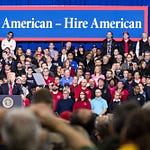Kilometers below the Canadian shield, in a laboratory painstakingly designed to eliminate nearly all sources of background radiation, radiobiologists Douglas Boreham and Chris Thome study the impacts of ultra low dose radiation environments on living cells. In a conversation sure to delight our most nerdy of listeners, we explore the science surrounding the claims of the linear no-threshold model and Doug's plan to send yeast into deep space.
In a nutshell
This episode explores cutting-edge radiation biology research, from sending yeast into deep space to studying organisms in ultra-low radiation environments. The guests discuss how removing background radiation can actually be detrimental to cellular health, challenging common assumptions about radiation exposure.
Episode overview
Dr. Douglas Boreham and Chris Thome, both radiation biologists, share fascinating insights into their research. Boreham discusses a NASA project sending yeast into deep space to study cosmic radiation effects, explaining how yeast serves as the perfect "astronaut" for such experiments. Thome details his work at SNOLAB, an underground facility where researchers can study biological systems in an environment nearly free of background radiation. Both scientists challenge the linear no-threshold model of radiation exposure, suggesting that some radiation exposure may actually be beneficial for cellular health and repair mechanisms.
About the guests
Dr. Douglas Boreham is a veteran radiation biologist with experience at Atomic Energy of Canada, McMaster University, and Bruce Power. He now heads the medical physics department at Northern Ontario School of Medicine University. Chris Thome is a professor at the medical school in Sudbury and conducts research at SNOLAB, specializing in low-dose radiation biology.
Quotes
Boreham on cosmic radiation:
"Astronauts even in low Earth orbit or when they went to the Apollo mission, they get hit with a lot of great cosmic radiation. And to the extent where they get flashes of lights, flashes of light in their eyes from heavily charged particles going through their head."
Thome on background radiation:
"What a lot of people don't realize is that it's something that we're exposed to all the time on a daily basis. I mean, not just medical, but from natural sources as well."
Boreham on DNA repair:
"We're roughly having in our body, 3 million cells commit suicide every minute. That's to keep the genomic stability and we replace 3 million cells every minute."
Dive deeper
According to Boreham, yeast cells are ideal for space radiation experiments because they don't need water, air, or specific temperatures to survive.
NASA is exploring the possibility of putting humans into hibernation for Mars missions, with yeast experiments potentially informing this research.
Boreham states that a 2 Gray dose of radiation causes roughly 80-100 double strand breaks in every cell.
Thome explains that SNOLAB, located 2 km underground, provides shielding equivalent to about 6 km of water, effectively eliminating cosmic radiation.
According to Thome, radon is the largest source of natural background radiation for most people.
Boreham mentions that we have about 10,000 DNA alterations per hour in a cell from normal metabolic processes.
Thome reports that experiments in ultra-low radiation environments show organisms growing slower, experiencing more mutations, and being more prone to damage when exposed to high doses.
Both scientists challenge the linear no-threshold (LNT) model of radiation exposure, suggesting some radiation may be beneficial for cellular health.
Keywords
Radiation biology, cosmic radiation, DNA repair, background radiation, SNOLAB, yeast experiments, linear no-threshold model, NASA, SNOLAB, Atomic Energy of Canada Limited, McMaster University, Bruce Power, Northern Ontario School of Medicine University, Health Canada












Share this post